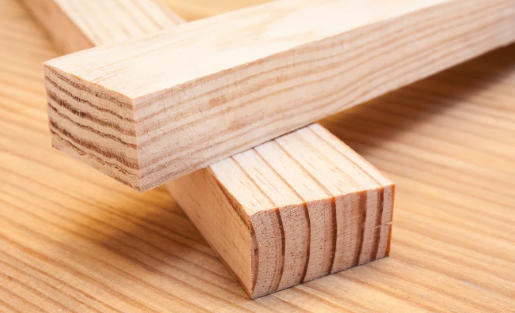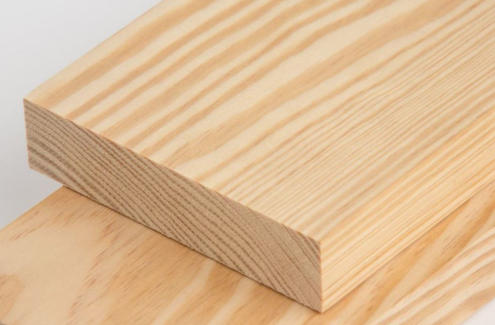










Content Menu
● Why Hardness Doesn't Define Categories
● So, Is Pine Wood a Hardwood?
● The Hardness Factor: Where Pine Stands Among Woods
● Main Types of Pine Wood and Their Traits
● Comparing Pine Wood to Hardwood
● The Benefits of Using Pine Wood
>> 1. Lightweight and Easy to Handle
● Common Disadvantages of Pine Wood
● Applications of Pine Wood Across Industries
>> Construction and Architecture
● Pine's Role in Sustainable Design
● How to Differentiate Pine from Hardwoods in Practice
● Maintenance and Care Tips for Pine Wood Products
>> Refinishing Older Pine Furniture
● Why Pine Is Still a Popular Choice in Modern Design
● FAQs
>> 1. What makes pine a softwood rather than a hardwood?
>> 2. Is pine durable enough for furniture and flooring?
>> 3. Can pine be used outdoors?
>> 4. What's the best finish for pine wood?
>> 5. Is pine environmentally friendly?
Wood classification can be confusing to many craftsmen and consumers alike. While the terms “hardwood” and “softwood” suggest a difference in density and strength, these categories are actually based on tree biology, not hardness. This often leads to misconceptions, especially when dealing with durable softwoods like pine.

- Hardwoods are derived from angiosperm trees — species that produce flowers, fruits, and broad leaves. Examples include oak, maple, teak, and walnut.
- Softwoods come from gymnosperm trees, typically evergreens with needle-like leaves and cones, such as pine, cedar, fir, and spruce.
This botanical distinction comes from the tree's reproductive system, meaning some “softwoods” can physically be harder than certain hardwoods.
The term “hardwood” refers to structural differences in the xylem vessels of the tree. Hardwoods have vessel elements that carry water, while softwoods rely on simpler tracheid cells. These anatomical details influence texture, growth rate, and machining properties more than simple physical hardness.
The short answer: No, pine is not a hardwood. It's a softwood, belonging to the *Pinaceae* family. Its tree species are evergreen conifers characterized by cones and needle-like leaves.
Despite being labeled a softwood, pine's strength, stability, and versatility have made it one of the most important commercial timbers worldwide. Builders, furniture makers, and interior designers prefer pine for its ease of use, cost-effectiveness, and aesthetic appeal.
Woodworkers often need to measure hardness to assess performance for various applications such as flooring or heavy furniture. This is usually expressed through the Janka hardness rating, which measures how resistant a wood species is to indentation.
- Eastern White Pine: about 380 lbf (very soft, easy to work with)
- Western White Pine: around 420 lbf
- Radiata Pine: approximately 560 lbf
- Southern Yellow Pine: up to 870 lbf (significantly harder)
- Heart Pine (longleaf pine): can reach 1,200 lbf, almost as hard as some oaks
For reference:
- Red Oak (hardwood): 1,290 lbf
- Maple: 1,450 lbf
- Teak: 1,000+ lbf
This data shows that while most pine species are softer, certain dense varieties like *Southern Yellow Pine* approach the durability of true hardwoods.
Pine is not a single species; it encompasses dozens, and each has distinctive mechanical and aesthetic qualities suited to different purposes.
A light, easy-to-carve wood known for smooth texture and pale color. It's commonly used in trim, interior moldings, or fine furniture that requires surface finishing.
Tough and dense with a warm yellow tone, this species provides strength suitable for framing, decking, flooring, and even staircases.
Native to the Pacific regions and widely grown in plantations, Radiata Pine offers uniform grain and consistency, making it an excellent base for plywood and engineered panels.
Slightly reddish and moderately dense, this is one of Europe's most common timbers, favored for structural applications and rustic furniture styles.
Characterized by wide grain and golden hues, it's ideal for cabinetry and interior decor due to its moderate hardness and smooth appearance.
| Feature | Pine Wood (Softwood) | Hardwood (Examples: Oak, Maple, Walnut) |
|---|---|---|
| Tree Type | Coniferous, evergreen | Broadleaf, deciduous |
| Growth Rate | Fast-growing, sustainable | Slow-growing |
| Density | Lower to medium | Usually higher |
| Workability | Excellent; easy to shape, sand, and finish | Can be harder to cut or machine |
| Cost | More affordable | Typically more expensive |
| Durability | Moderate; depends on species and treatment | High; ideal for long-term use |
| Common Applications | Furniture, flooring, packaging, construction | Flooring, cabinetry, premium furniture, veneers |
| Appearance | Knotted, light-colored, warm tones | Smooth grain, dark or medium tones |
This table reflects why pine remains one of the world's most popular choices for manufacturers who need balance between practicality and beauty.

Pine's relatively low density allows easier cutting, drilling, and shaping, even by amateur carpenters.
A rapid growth rate ensures wide availability, significantly reducing the cost compared to hardwoods like walnut or cherry.
The natural knots and grain patterns of pine enhance rustic or farmhouse-style interiors, yet can be modernized when painted white or stained darker.
Pine forests grow extensively across North America, Europe, and Asia, ensuring a reliable and renewable resource for industries worldwide.
With sustainable forestry practices, plantation-grown pine contributes to responsible timber production and helps reduce pressure on tropical hardwoods.
- Soft texture makes it prone to dents, scratches, and wear from heavy traffic.
- High resin content can cause uneven finishing unless sealed properly.
- Age-related color changes like yellowing or darkening over time.
- Limited weather resistance, requiring surface treatments for outdoor use.
- Possible warping under moisture if not properly dried and seasoned.
While these drawbacks exist, proper processing, sealing, and finishing can overcome most of them, ensuring a long service life.
Pine's strength-to-weight ratio makes it indispensable in structural framing, wall beams, roof trusses, and window sashes. Pressure-treated pine, in particular, resists insect and moisture damage effectively.
From bed frames to dining tables, pine offers a rustic charm that's both affordable and adaptable. It's also easy to repaint, making it ideal for custom or DIY projects.
Due to its lightness, pine is a perfect choice for pallets, crates, and shipping boxes, offering strength without excess transport weight.
Artisans and crafters love pine for carvings, shelves, and wooden ornaments. Its consistent texture makes it an enjoyable material to work with.
Pine finds wide use in door frames, wall panels, ceilings, and cabinetry, delivering warmth and authenticity to home interiors.
Environmentally conscious industries often seek renewable materials. Pine fits this demand perfectly because of its:
- Fast growth cycle (some species mature in just 20–25 years).
- Certifiable sustainability through organizations like FSC and PEFC.
- Carbon storage capacity, which locks atmospheric CO₂ in wood during its lifecycle.
Sustainable pine plantations in China, Canada, and Scandinavia provide reliable, eco-friendly lumber that supports green construction certifications like LEED and BREEAM.
- Weight and texture: Pine feels lighter and smoother than hardwoods.
- Grain pattern: Pine's grain is usually straight and more pronounced.
- Color tone: Typically pale yellow with scattered dark knots.
- Scent: Pine emits a recognizable resinous aroma, especially when cut.
Knowing these distinctions helps buyers and builders correctly identify materials and ensure proper application.
Always seal pine surfaces using polyurethane, lacquer, or resin blockers before applying paint or stain. This prevents blotching and enhances durability.
- Use a soft, damp cloth to wipe surfaces without abrasive cleaners.
- Keep pine furniture away from direct heat or sunlight, which can cause cracking or discoloration.
- Place felt pads under furniture feet to avoid indentation.
Pine can be rejuvenated easily. Sand the surface, re-stain it, and finish with a fresh coat of varnish for a new look that can last several more years.
In the age of engineered materials, pine continues to thrive because it provides a natural, renewable touch that synthetic materials fail to replicate. Designers appreciate its adaptability to minimalist, vintage, and Scandinavian aesthetics alike. Its affordability also allows homeowners and manufacturers to create beautiful interiors without exceeding budget constraints.
Today, pine stands not as a compromise, but as a balanced material capable of achieving remarkable durability, style, and environmental responsibility.
Pine wood is not a hardwood, but a softwood derived from coniferous trees. However, the term “softwood” is somewhat misleading — pine's practical durability, eco-friendliness, and affordability have made it one of the most valuable timbers globally. From furniture and construction to packaging and design, it offers versatility that rivals many hardwoods.
When properly treated, sealed, and maintained, pine becomes not just a budget-friendly choice but a sustainable, aesthetically timeless material suitable for generations.

Pine comes from coniferous, cone-bearing trees, categorizing it as a softwood under botanical definitions. This classification refers to its tree type, not its physical hardness.
Yes. When properly sealed or treated, pine can last for decades. Denser pine species like Southern Yellow Pine can even withstand moderate flooring traffic.
Untreated pine isn't weather-resistant, but pressure-treated pine performs well outside and resists rot, insects, and moisture effectively.
A sealing primer followed by polyurethane or oil-based varnish is ideal. This prevents resin bleed and protects the surface from scratches and moisture.
Yes. Fast regrowth rates and plantation-based forestry make pine one of the most sustainable timber sources for modern manufacturing and construction projects.